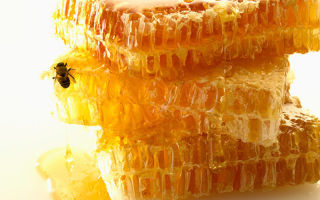Content
- 1 Description of melilot honey
- 2 Why is honey from sweet clover useful?
- 3 The harm of melilot honey
- 4 Calorie content of honey from sweet clover
- 5 How to use sweet clover honey
- 6 The use of honey from sweet clover in traditional medicine
- 7 How to distinguish melilot honey from fake
- 8 Contraindications to melilot honey
- 9 Terms and methods of storage
- 10 Conclusion
The beneficial properties and contraindications to melilot honey were well known in Russia. The ancient tribes successfully treated many diseases with the help of a useful delicacy. In the modern world, sweet clover honey is recognized as one of the most healing and expensive varieties. Unfortunately, natural nectar is rarely seen on store shelves. In the USA, England and Canada, sweet clover honey is considered a reference beekeeping product.
Description of melilot honey
Melilot honey has an interesting taste and wonderful aroma. The color of the product changes significantly during storage and is not considered spoilage.
What does honey from a sweet clover look like?
Fresh, only harvested sweet clover honey has a beautiful golden color. It resembles light amber or straw, sometimes it can be almost pearl. The saturation of the shades depends entirely on the type of sweet clover from which the nectar is collected.
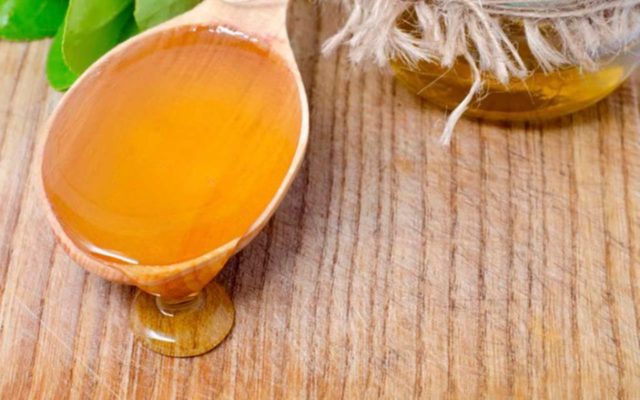
What is sweet clover honey made of
Melilot honey is obtained from nectar, which bees collect from medicinal plants of the same name - yellow and white melilot (Melilotus). The herbaceous perennial belongs to the legume family. It is abundantly found in meadows, wastelands, abandoned fields, along roads. The leaves have a three-petal shape, and small flowers are collected in loose oblong brushes up to 7 cm long. The homeland of sweet clover is the middle and southern latitudes of the European part of the continent. As a valuable melliferous plant and fodder plant, it is successfully cultivated all over the world.
This honey plant is prized for its long flowering period. Throughout the summer, until September, small white and yellow flowers with a rich powdery sweet, coumarin aroma bloom on lush bushes that grow up to 80-200 cm. By autumn, sweet clover remains practically the only flowering wild plant suitable for collecting nectar.
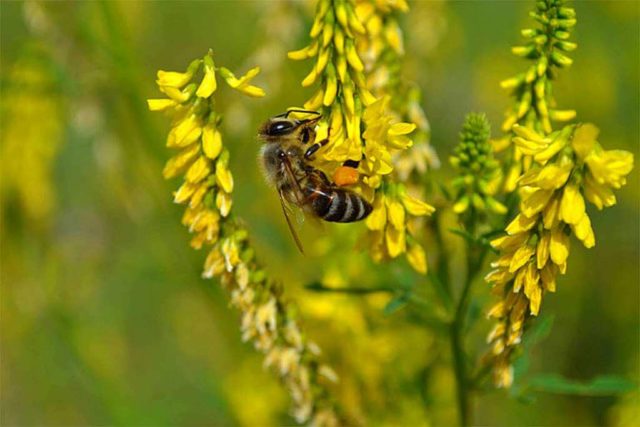
Where is sweet clover honey collected
Melilot yellow and white is widespread throughout the European part of the Russian Federation, except for the northeastern regions, in Altai and the Caucasus, in Western Siberia, in the Far East, in the Urals, in Central Asia. It grows like a weed in wastelands, in dry meadows and along the edges of ravines, it can often be seen along country roads.
Flowering begins in July and lasts until September, with abundant nectar production. The highest yield occurs in July-August. By the end of October, the harvested crop begins to thicken and crystallize. The process ends by December, when the nectar takes on a pale white, creamy color with a coarse texture.
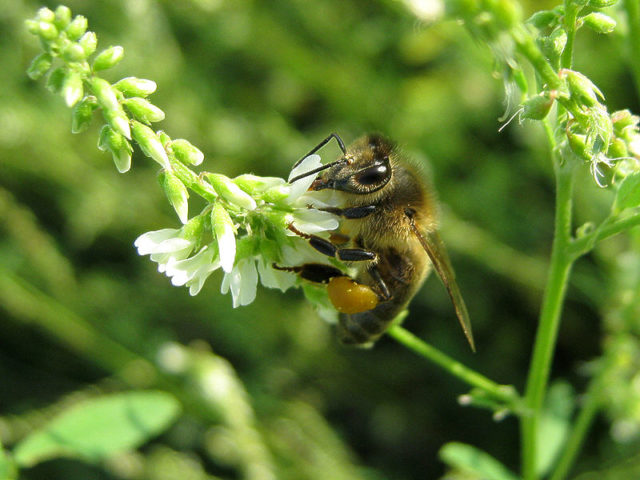
Melilot honey taste
Melilot nectar from different plant species tastes noticeably different:
- white gives a very delicate, vanilla-rich product with a long-lasting pleasant aftertaste and rich floral-vanilla aroma;
- yellow is more intense, bittersweet, very bright, without cloying, the smell is very light, almost not felt.
Why is honey from sweet clover useful?
The beneficial properties of honey from white and medicinal sweet clover are very similar. In addition to the obvious culinary and immunostimulating value, sweet clover nectar has a number of healing qualities that are little known to most modern people:
- able to liquefy and remove phlegm from the lungs with various diseases of the respiratory tract;
- has a calming and sedative effect, normalizing the work of the central nervous system, providing good sleep, relieving stress;
- has a strong antimicrobial effect, reduces inflammation and can be used both externally and internally;
- effectively restores strength after lingering illnesses, hard work, intense physical training and mental stress;
- helps to cope with the symptoms of hypertension and varicose veins, gives elasticity to the walls of blood vessels, normalizes the movement of blood in the body;
- serves as an excellent prevention of viral diseases, stimulates the digestive tract.
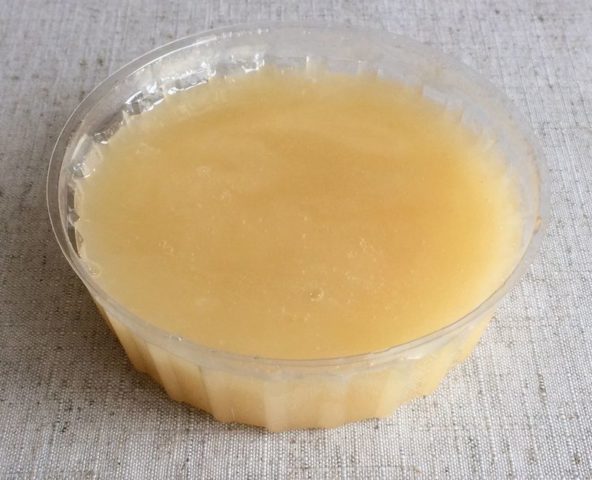
The harm of melilot honey
Melilot honey is a high-calorie product, saturated with biologically active substances and sugars. When using it, you should observe the measure. In small quantities, nectar is of great benefit, and exceeding the recommended doses is fraught with serious negative consequences:
- the appearance of severe allergic reactions - rash, edema;
- a significant increase in blood sugar;
- the appearance of excess weight;
- poor blood clotting.
Do not take a beekeeping product as an ordinary sweetness. It must be remembered that honey is an excellent remedy that has its limitations.
Calorie content of honey from sweet clover
The beneficial properties of the product are due to its unique chemical composition. The nectar contains:
- carbohydrates, consisting of equal parts of fructose and glucose - 80-82% (a small percentage falls on sucrose and polysaccharides);
- proteins - 0.8-1%;
- vitamins - B4, C, tocopherol, phylloquinone;
- ash, tar and tannins;
- glycosides, flavonoids, organic acids;
- minerals - manganese, fluorine, chromium, zinc, copper;
- coumarin and essential oil.
Melilot nectar is a high-calorie product. 100 g of nectar contains 310-312 kcal.
How to use sweet clover honey
The use of such a sweet as a remedy has its own subtleties:
- The maximum dose per day for raising immunity for adults is 25 g, a child can be given up to 10 g. Exceeding this amount will not enhance the therapeutic effect of honey, and negative effects may appear.
- You can use nectar with clean boiled water, juices, compotes, herbal decoctions and fruit drinks at room temperature.
- To effectively cure a cough, you can add black radish juice: make a depression in the root vegetable, put 10 g of honey there and wait for the liquid to release.
- Do not mix the product with milk - such a mixture can cause diarrhea, bloating, colic.
- For external compresses on ulcers and wounds, nectar should be mixed with flour in equal parts.
- With tuberculosis, the daily rate is 50 g for adults.
- A glass of slightly warm water and 10 g of the product in the morning on an empty stomach helps to get rid of stress, gives strength, and normalizes the digestive tract.
- Melilot nectar in a honeycomb is indispensable under reduced pressure - it is one of the few remedies that can effectively fight hypotension.
As a tonic, prevention of colds, it is enough to eat 10-20 g of delicacies daily.
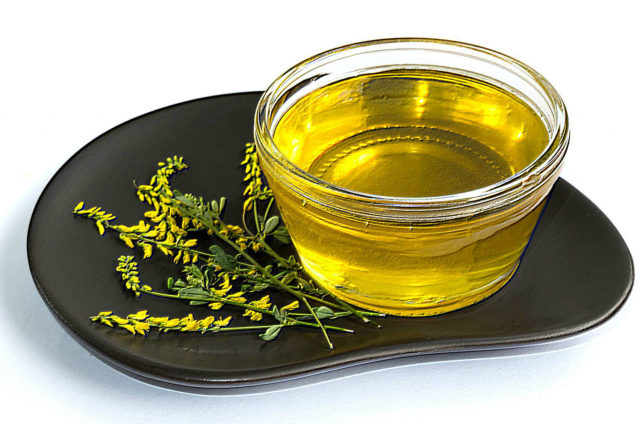
The use of honey from sweet clover in traditional medicine
The benefits of sweet clover honey for the human body are due to the valuable chemical substances contained in the nectar collected by bees. Since ancient times in Russia this medicinal product was used to treat the "bottom" - the genitourinary system, especially in women, diseases of the pelvis and abdominal cavity, gout, stimulated lactation during the period of breastfeeding. In modern folk medicine, honey from sweet clover is used for such diseases:
- bronchitis, tracheitis, pneumonia, whooping cough, tonsillitis;
- inflammatory processes in the mouth, throat;
- increased nervous irritability, regular stress, insomnia, hysteria;
- headaches caused by vasospasm;
- gouty arthritis;
- bowel problems - colic, flatulence, constipation;
- gastritis with high acidity, peptic ulcer;
- cardiospasms, hemorrhoids;
- purulent and inflamed wounds, abscesses, ulcers, boils;
- phlebeurysm;
- low blood pressure, dizziness;
- endocrine disorders, such as hypothyroidism.
Melilot honey also effectively fights diseases of the urinary and reproductive system, inflammatory processes in the joints.
How to distinguish melilot honey from fake
Quite often, unscrupulous sellers replace real melilot honey with fakes made from sugar, molasses or cheaper analogs. In order not to be mistaken when purchasing a valuable medicinal product, it is important to know these aspects:
- Real sweet clover honey has a mild vanilla aroma or a faint coumarin aroma if it is a product taken from a yellow clover. Intense scents with a caramel flavor speak of a vanilla-flavored fake.
- The texture should be uniform, viscous for fresh honey, and coarse for candied honey. Delamination, the presence of lumps or impurities indicates a poor-quality product.
- Fresh melilot honey is transparent, ranging in color from golden and light amber to almost white. The candied nectar has a uniform matte beige, cream or yellowish-white, pearl color. If melilot honey, after 3 months after collection, retains its transparency and viscous consistency, then most likely it is sugar syrup.
- The cost of an elite variety cannot be low. If the seller offers sweet clover honey at the price of regular flower honey, you should be on your guard.
When choosing sweet clover honey, it is worth asking about the availability of documents for a consignment of goods. Better yet, contact the producer of the elite variety directly or purchase honey in the region where there are apiaries and melilot fields.
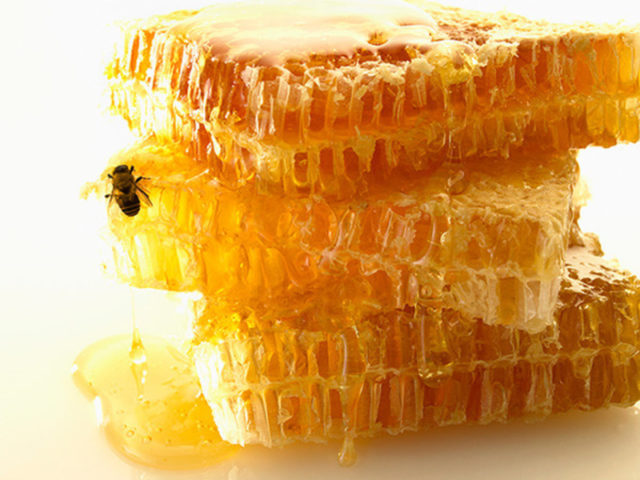
Contraindications to melilot honey
Melilot honey has a number of restrictions for consumption. The product must be excluded from the diet in the following cases:
- with a pronounced allergic reaction, especially to pollen of plants and legumes;
- with individual intolerance to the components;
- children's age up to two years.
Use with caution in small portions:
- in children under 5 years of age;
- with diabetes mellitus;
- in the presence of obesity;
- during pregnancy and lactation;
- with low blood clotting and bone marrow diseases.
Terms and methods of storage
Melilot honey is one of the few products that, if stored properly, do not deteriorate for years. It is necessary to store nectar in glass, ceramic or wooden containers, tightly sealed, without access to sunlight, for 2 years. The ambient temperature should be between +12 and +18 degrees.
You cannot use metal spoons, it is better to purchase special wooden spindles. Avoid getting moisture or water into the container. Dangerous to store in metal, galvanized dishes or plastic containers.
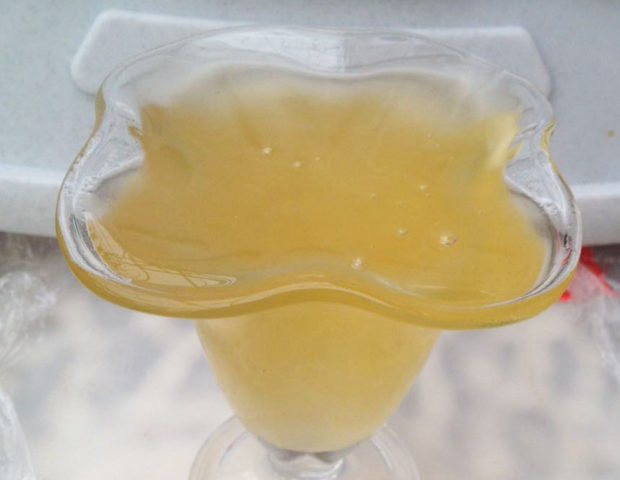
Conclusion
The beneficial properties and contraindications to melilot honey are incomparable, the former significantly outweigh the possible negative consequences. Nectar is an effective remedy for the restoration and stimulation of immunity, treatment of diseases of the genitourinary system, joint diseases. Observing the recommended dosages, you can significantly improve health, reduce the negative effects of stress and overwork. The medicinal delicacy should be stored in glass, ceramic or wooden containers, in a cool place, away from heating appliances and sunlight.

